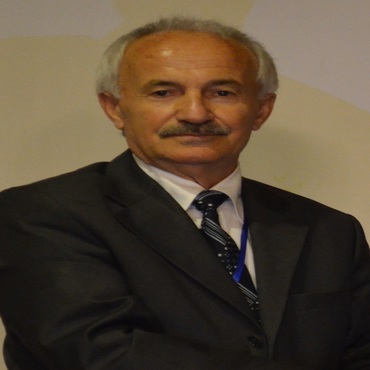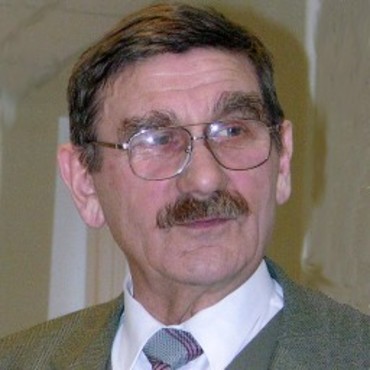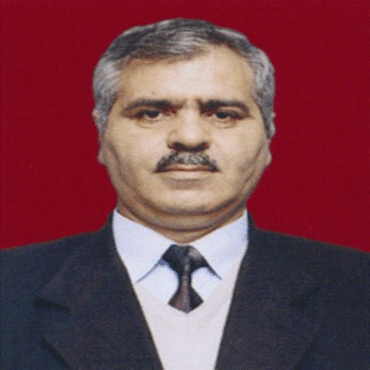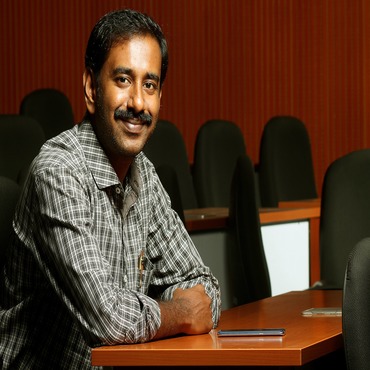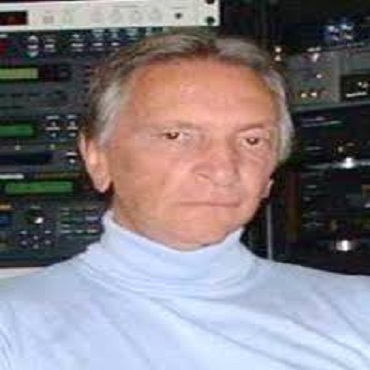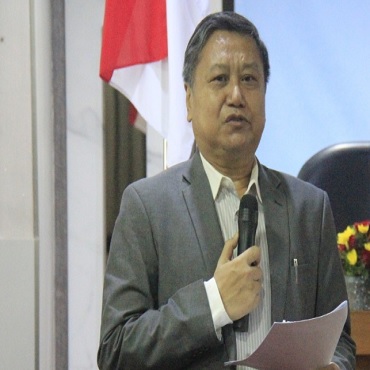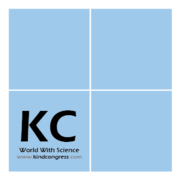
Applied Physics 2019

Theme: Exploring the innovations and excellence across the spectrum of Physics and Mathematical Science
Applied Physics 2019 which is scheduled during October 16-17, 2019 in Singapore City, Singapore addresses key issues that are the spine of technology and innovations impacting our lifestyle. It aims to improve the cognizance by claiming world through perception, experimentation and hypothesis. Applied physics solves engineering and medicine problems through exploratory standards. Similarly, Mathematics proves the description of nature and universe done on the basis of the principle of physics. Applied mathematics aims to apply the mathematical models to different fields such as science, engineering, business, computer science and industry.
Applied physics 2019 conference gives an immense opportunity to learn and express the views through interactive sessions, poster presentation, and abstract publishing. Eminent professionals, researchers, physicists, mathematicians, post graduates, young researchers will share their views and enhance knowledge on broad spectrums of physics and mathematics. It will publish the abstracts of the research conducted by the prominent scientists and scholars.
Session-01: Applied Physics and Mathematics
Applied physics is focused on particular technology which commonly considered as a connection in between physics and engineering. Applied physics based on basic concepts of the physical sciences, but the utilization of scientific principles in practical devices and systems are really concerned.
Application of mathematical methods in different fields such as science, engineering, business, computer science, and the industry is called applied mathematics, so it is a combination of specialized knowledge and mathematical science. Applied Mathematics also describes the professional specialty where mathematicians work on practical problems by implementing mathematical models and formulating them.
- Agrophysics
- Biophysics
- Medical Physics
- Chemical Physics
- Accelerator Physics
- Communication Physics
- Semiconductor Physics
Physics Conferences | Physics Workshops | Math Seminars | Mathematics Conferences
Session-02: Atomic, Molecular and Optical Physics
AMO- Atomic, molecular, and optical science is the investigation of the matter and light-matter connections at the size of one or more atoms and energy scales around a few electron volts. The three fields are firmly interrelated. Commonly, the hypothesis and applications of scattering, absorption, emission of electromagnetic radiation from excited molecules and atoms, the examination of spectroscopy, lasers and masers generation, and the optical properties fall into these classes.
Physics Events | Physics Seminars | Physics Meetings | Physics Symposiums
Session-03: Astrophysics
Astrophysics is the part of cosmology that utilizes the standards of chemistry and physics "to learn the idea of the astronomical objects, as opposed to their positions or movements in space". Astrophysicists apply ideas and techniques from numerous controls of physics, mechanics, statistical mechanics, electromagnetism, quantum mechanics, thermodynamics, relativity, atomic and molecular physics, and nuclear physics.
Bangkok Physics Conferences | Asia Physics Conferences | Applied Mathematics 2019 Conferences | Applied Physics 2019 Conferences
Session-04: Condensed Matter Physics
The field of physics that deals with the macroscopic physical properties of matter is called condensed matter physics. Specifically, it is worried about "condensed" phases that show up whenever the quantity of particles in a system is very huge and the collaborations between them are strong.
Physics Workshops | Math Seminars | Mathematics Workshops | Physics Seminars
Session- 05: Nuclear and Particle Physics
Nuclear physics is the field of physical science that reviews nuclear cores and their constituents and communications. Different types of nuclear matter are likewise contemplated.
Particle physics advanced out of nuclear physical science and both these are ordinarily taught in close affiliation. Nuclear astrophysics, the use of nuclear science to astronomy, is urgent in clarifying the internal functions of stars and the beginning of the compound components.
USA Physics Conferences | Europe Physics Conferences | Asia Physics Conferences | Asia Physics Workshops
Session- 06: Quantum Physics
Quantum mechanics or quantum physics deals with matrix mechanics or wave mechanical model, including quantum field hypothesis, is a fundamental hypothesis in physics which depicts nature at the littlest sizes of vitality dimensions of molecules and subatomic particles.
- Quantum Gravity
- Quantam Electronics
- Quantum Field Theory
- Path Integral Formulation
- Quantum Electrodynamics
Physics Conferences | Physics Workshops | Math Seminars | Mathematics Conferences
Session- 07: Thermodynamics and Statistical Physics
Thermodynamics is the part of physics that manages heat and temperature, and their relation to work, radiation, energy, and matter properties.
Statistical physics is a part of physics where the methods like statistics, probability theory and particularly the mathematical tools will be used in solving out the large populations, approximations, and physical problems.
Physics Events | Physics Seminars | Physics Meetings | Physics Symposiums
Session- 08: Nano Physics and Nano Technology
The word Nanophysics alludes to the engineering of matter, particles, and structures on the nanometer scale. Essential properties of materials, for example, the electrical, optical, thermal and mechanical properties, are controlled by the manner in which atoms and molecules collect on the nanoscale into bigger structures.
Nanotechnology is the use of nanoscience prompting the utilization of new nanomaterials and nanosize segments in applicable products. In the long run, nanotechnology will give us the capacity to structure specially crafted materials and products with new upgraded properties, new nanoelectronic parts, new sorts of smart medicines and sensors.
Bangkok Physics Conferences | Asia Physics Conferences | Applied Mathematics 2019 Conferences | Applied Physics 2019 Conferences
Session- 09: Algebra
Algebra is one of the wide pieces of arithmetic, along with geometry, number hypothesis, and analysis. In its most broad structure, the study of mathematical symbols and the rules for manipulating these symbols is a unifying thread of almost all of mathematics is called algebra.
Physics Conferences | Physics Workshops | Math Seminars | Mathematics Conferences
Session- 10: Analysis
Analysis or Mathematical analysis is a part of mathematics that incorporates the theories of integration, differentiation, measure, infinite series, limits, and analytic functions. These theories are typically examined with regards to real and complex numbers and functions.
Physics Conferences | Physics Workshops | Math Seminars | Mathematics Conferences
Session- 11: Geometry
Geometry is a part of mathematics worried about inquiries of shape, the relative position of figures, shape and the properties of space. There are some broad ideas that are pretty much essential to geometry. These incorporate the ideas of lines, points, planes, surfaces, curves and angles, just as the further developed thoughts of manifolds and topology or metric.
USA Physics Conferences | Europe Physics Conferences | Asia Physics Conferences | Asia Physics Workshops
Session- 12: Statistics and Applied Probability
Practically all-natural phenomena in the biological, physical, technological and sociologies have random components. The utilization of probabilistic methods to comprehend the random elements in real-life problems. Statistics is the study of utilizing data, which ordinarily emerges from the randomness inherent in nature, to learn more things.
Research regions of the applied math display this interchange among mathematics and real-life problems. Areas of current intrigue incorporate improvement of stochastic systems; the investigation of stochastic procedures and stochastic differential equations in hydrology and broadcast communications.
Bangkok Physics Conferences | Asia Physics Conferences | Applied Mathematics 2019 Conferences | Applied Physics 2019 Conferences
Session- 13: Computational Mathematics and Scientific Computing
Computational applied mathematics comprises generally of utilizing mathematics for permitting and improving PC computation in applied mathematics. Computational mathematics may likewise allude to the utilization of computers for mathematics itself. The two parts of computational math include scientific research in mathematics just as in regions of science where computing plays a focal and basic job that is practically all sciences, and emphasize algorithms, numerical techniques, and symbolic calculations.
Thailand Physics Conferences | Asia Physics Conferences | Applied Mathematics 2019 Conferences | Applied Physics 2019 Conferences
Market Analysis Report
The ultimate aim of physics is to find a unified set of laws governing matter, motion, and energy at small (microscopic) subatomic distances, at the human (macroscopic) scale of everyday life, and out to the largest distances (e.g., those on the extragalactic scale). This ambitious goal has been realized to a notable extent. Although a completely unified theory of physical phenomena has not yet been achieved (and possibly never will be), a remarkably small set of fundamental physical laws appears able to account for all known phenomena. The body of physics developed up to about the turn of the 20th century, known as classical physics, can largely account for the motions of macroscopic objects that move slowly with respect to the speed of light and for such phenomena as heat, sound, electricity, magnetism, and light.
According to the new market research report on the by Type Application of physics like (Optical communication & laser processing), Vertical (Commercial, Telecom, Research, Defense, Medical, Automotive, Electronics, & Industrial), & Geography - Global Forecast to 2022", this market is expected to be valued at USD 15.38 Billion by 2022, at a CAGR of 5.2% between 2017 and 2022. The major factors driving the growth of physics include increasing demand from the healthcare sector, environmental sector, financial sector and shift towards production of nano and micro devices, and enhanced performance over the traditional material processing techniques.
Semiconductors
Market value for dielectrics materials globally has reached approximately around $43.3 billion in 2016 and was estimated to reach nearly $62.5 billion in 2021, registering a CAGR of 7.6% through 2021.
Electronic display materials has reached around $61.5 billion in 2016. This market was estimated to reach $128.0 billion by 2022 with a CAGR of 13.3% over a five year time period from 2017 to 2022.
Photonics
The global market for Photonic sensors and detectors was $6.3 billion in 2013. This market is projected to grow from nearly $7.3 billion in 2014 to about $15.2 billion in 2019, by registering a CAGR of 15.9% during a period from 2014-2019.
Nanotechnology
The global market for nanotechnologies in energy applications should grow from $5.7 billion in 2018 to reach $10.0 billion by 2023 at a compound annual growth rate (CAGR) of 12.0% for the period of 2018-2023
The global market for nanodevices and nanomachines should grow from $736.1 million in 2018 to $1.3 billion in 2023 and then to $2.7 billion in 2028, at a compound annual growth rate (CAGR) of 11.6% from 2018 to 2023 and 16.0% from 2023 to 2028.
Quantum Dots
Quantum Dots market value is aggregated to $610.0 million revenue in 2016 and is expected to turn over $3.4 billion by 2021, increasing to a CAGR of 41.3% from 2016 to 2021.
Quantum Dots market value was estimated to $121 million in revenues in 2013.In 2010, its worth was estimated to reach $67 million in revenues and it was projected to grow at a CAGR of 59.3%, reaching almost $670 million by 2015.
Lasers
The global market value for Quantum Cascade Lasers according to BCC research has reached $5.6 billion in 2015. Future market value is expected to increase from$6.1 billion in 2016 to $9.7 billion in 2021 at a Compound Annual Growth Rate (CAGR) of 9.7% for 2016-2021.
Ultrafast Lasers market value has reached $2.1 billion in 2015 and it is expected to increase from around $2.7 billion in 2016 to nearly $7.1 billion by 2021 at a CAGR of 21.7% for 2016-2021.
Optics
The global market for Fiber Optics is expected to reach $3.2 billion by 2021 from $2 billion in 2016 at a CAGR of 9.9% from 2016 – 2021.
Global market for Optical Coatings is expected to reach around $14.2 billion by 2021 from $9.5 billion in 2016 at a CAGR of 8.3% from 2016 through 2021.
Major Physics Associations and Societies around the Globe
USA
American Physical Society
American Association of Physicists in Medicine
American Astronomical Society
American Crystallographic Association
American Meteorological Society
American Physical Society
American Association of Physics Teachers
The International Association of Mathematical Physics
The international society for optics and photonics
American Association of Physics Teachers
American Institute of Physics
Optical Society of America
International Union of Pure and Applied Physics
Materials Research Society
Society for Applied Spectroscopy
Society for Nonlinear Dynamics and Econometrics
Europe
European Acoustics Association
European Group for Atomic Spectroscopy
European Biophysical Societies Association
International Astronomical Union
The international society for optics and photonics
European Nuclear Society
International Union of Crystallography
European Federation of Organisations for Medical Physics
Society of Non-Linear and Dynamics Econometrics
European Geophysical Society
European Colloid and Interface Society
European Geophysical Society
European High Pressure Research Group
European Optical Society
European Physical Society
Scandinavian Society for Electron Microscopy
Asia
Info Physical Society of Hong Kong
Info Physical Society of the Republic of China
Korean Federation of Science and Technology Societies
United Physical Society of Russian Federation
Physical Society of Japan
Indian Space Research Organisation
Japan Society of Applied Physics
Optical Society of Japan
African Astronomical Society
African Physical Society
Egyptian Material Research Society
Egyptian Nuclear Physics Association
Egyptian Physicists Association
Russian Gravitational Society
United Physical Society of Russian Federation
Top Universities of Physics Across the Globe
USA
California Institute of Technology
Massachusetts Institute of Technology
Harvey Mudd College
Harvard University
Cornell University
Rensselaer Polytechnic Institute
University of California – Berkeley
Stanford University
United States Naval Academy
University of North Alabama
Jacksonville State University
Northern Arizona University
University of Central Arkansas
California State University
Sonoma State University
Europe
Rheinisch-Westfälische Technische Hochschule Aachen
Universität Augsburg
Imperial College London
University of Manchester
University College London
Sapienza - Università di Roma
Ecole Polytechnique ParisTech
Lomonosov Moscow State University
Universidad Autónoma de Madrid
Universitat de Barcelona
Delft University of Technology
Royal Institute of Technology
Vienna University of Technology
University College Dublin
Charles University
Czech Technical University
Asia
Tokyo Institute of Technology
Indian Institute of Technology Bombay
National Taiwan University
Hong Kong University of Science and Technology
University of Hong Kong
National University of Singapore
Nanyang Technological University
Shandong University
Nanjing University
Zhejiang University
Indian Institute of Science
University of Science and Technology of China
Quaid-i-Azam University
Pohang University of Science and Technology
Osaka University
Funding agencies for Physics Research
Department of Coal
Department of Atomic Energy
Department of Biotechnology
University Grants Commission
Department of Ocean Development
Department of Science and Technology
All India Council for Technical Education
Council of Scientific and Industrial Research
Defence Research and Development Organisation
Department of Scientific and Industrial Research
Major Universities in Thailand
Chulalongkorn University
Mahidol University
Chiang Mai University
Thammasat University
Kasetsart University
Conclusion
Industry requires new ages of physicists in such parts as semiconductor, energy, space, life sciences, defense and propelled fabricating. From computerized reasoning and self-driving vehicles to clinical imaging and 3D printing, intense innovative change is going on at lightning speed surrounding us. Even applied mathematics continues to be an integral part of manufacturing in many different ways: designing prototypes, optimizing designs, verifying designs, planning production and inventory, and managing supply chains. By this analysis we can predict that the physics and mathematics rule the world together and the opportunities in these rich fields keep on increasing with the rapid growth in the nanotechnology, lasers, optics, semiconductors, machine learning, iot, self driving automobiles, industrial automation, materials chemistry, geo sciences, data science and many related fields.
References;
"There is nothing special in the world. Nothing magic. Just physics"
- Applied Physics and Mathematics
- Atomic, Molecular, and Optical Physics
- Astrophysics
- Condensed Matter Physics
- Nuclear and Particle Physics
- Quantum Physics
- Thermodynamics and Statistical Physics
- Nano Physics and Nano Technology
- Algebra
- Analysis
- Geometry
- Statistics and Applied Probability
- Computational Mathematics and Scientific Computing
- Journal of Physics Research and Applications
- Research and Reports on Mathematics
- Research Journal of Optics and Photonics
10 Organizing Committee Members
4 Renowned Speakers
Hans Deyssenroth
Independent Researcher
Germany
Sky Darmos
Hong Kong Polytechnic University
Hong Kong
Manish Kumar
Indian Institute of Technology (BHU)
India
D. Darminto
Institute of Technology Sepuluh Nopember (ITS
Indonesia

